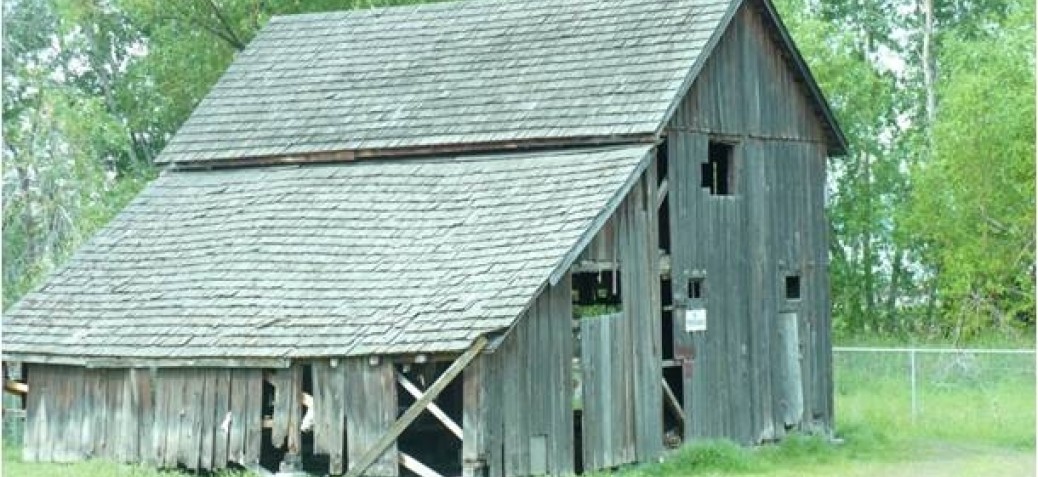Brent's Grist Mill
Place Description
This historic 1871 vernacular gable roofed 2 level Grist Mill is closely associated with the Fleming Property which was divided from the original Brent’s Mill estate. It was relocated from the original site at 2590 Harvey Ave. to the newly created Heritage Park at 2128 Leckie Pl. in 2002. It was installed on new concrete foundations which retain the orientation relationship with the Fleming House and the Dairy Barn.
Heritage Value
Brent's Grist Mill is of heritage value as an excellent and rare surviving example of pioneering agricultural and production practices in Kelowna. It was one of the first industrial enterprises in the Okanagan Valley and is the oldest surviving purpose-built grist mill building in B.C.. Frederick Brent faced many challenges in establishing his milling operation. He had to travel to San Francisco to buy his equipment, then move it by sailing ship, train, freight wagon, lake and river steamers, row boat along Okanagan Lake and for the last 6.5 kilometers by horse-drawn sledge, representing the challenges faced by early settlers at a time when this area was remote and transportation was difficult. At the end of each season, the millstones had to be dressed with steel picks, which until 1885 had to be sent to San Francisco for sharpening. The mill was an immediate success, and settlers and local natives from throughout the Valley brought their grain to be ground into flour, with up to a dozen camps at a time being set up on the creek waiting their turn at the mill.
The demise of the mill indicates the rapidly-developing food supply networks being developed throughout the province. Brent sold the property in 1893, and milling operations ceased, a result of cheaper flour being available from the steam-driven mills at New Westminster. The grist mill was later adapted for use as a dairy barn, and another dairy barn structure was added to the site circa 1912. Although the milling operation was dismantled, Brent's portable mill, with its imported millstones, survives and is displayed at the Kelowna Museum.
Additionally, the Grist Mill site is of value for its association with Frederick Brent (1827-1919), one of the earliest European settlers in the Kelowna area. He acquired his land, over 800 hectares, in 1870, and Peon Creek was renamed Mill Creek after his milling operation. Brent was well-known for his hospitality and for hosting the annual 'Bachelor Ball' at his house. He was appointed as a Justice of the Peace in 1872, and raised a family of six children; some of his descendants are still located throughout the Kelowna area.
The grist mill is a rare surviving structure from the 1870s, when there was a recession throughout the province and little construction occurred. As such, it is a valuable representation of the building practices of pioneer times. The grist mill was built of hand-hewn pine logs for the posts and beams, joined with pegged mortise and tenon joints. The siding is whip-sawn lumber, attached with forged square nails. The site was acquired by John Dilworth in 1900.
The preservation of the Grist Mill building reflects the community's commitment to conserving and interpreting their built heritage.
Character Defining Elements
Key elements that define the heritage character of the Grist Mill include:
-Form, scale and massing expressed by the two story structure with attached shed roofed mill set on a concrete grade foundation
-1871 Vernacular 2 storey gable and shed roofed barn with rural character
-Vertical whip-sawn planking with battens and attached with forged square nails
-Hand hewn pine log post and beam using pegged mortise and tenon joints
-Remnants of 1900’s Knob and Tube electrical system
-Oriented to maintain original close relationship with Fleming House and Dairy Barn





